-
EXECUTIVE SUMMARY
-
Market Overview
-
Key Findings
-
Market Segmentation
-
Competitive Landscape
-
Challenges and Opportunities
-
Future Outlook
-
MARKET INTRODUCTION
-
Definition
-
Scope of the study
-
Research Objective
-
Assumption
-
Limitations
-
RESEARCH METHODOLOGY
-
Overview
-
Data Mining
-
Secondary Research
-
Primary Research
-
Primary Interviews and Information
-
Gathering Process
-
Breakdown of Primary Respondents
-
Forecasting Model
-
Market Size Estimation
-
Bottom-Up Approach
-
Top-Down Approach
-
Data Triangulation
-
Validation
-
MARKET DYNAMICS
-
Overview
-
Drivers
-
Restraints
-
Opportunities
-
MARKET FACTOR ANALYSIS
-
Value chain Analysis
-
Porter's Five Forces Analysis
-
Bargaining Power of Suppliers
-
Bargaining Power of Buyers
-
Threat of New Entrants
-
Threat of Substitutes
-
Intensity of Rivalry
-
COVID-19 Impact Analysis
-
Market Impact Analysis
-
Regional Impact
-
Opportunity and Threat Analysis
-
Food Colorants Market,
-
BY Type (USD Billion)
-
Natural Colorants
-
Synthetic Colorants
-
Organic Colorants
-
Food Colorants Market,
-
BY Application (USD Billion)
-
Food Beverages
-
Cosmetics
-
Pharmaceuticals
-
Textiles
-
Food Colorants Market,
-
BY Form (USD Billion)
-
Liquid
-
Powder
-
Gel
-
Food Colorants Market,
-
BY End Use (USD Billion)
-
Bakery Products
-
Dairy Products
-
Confectionery
-
Meat Products
-
Food Colorants Market,
-
BY Regional (USD Billion)
-
North America
-
US
-
Canada
-
Europe
-
Germany
-
UK
-
France
-
Russia
-
Italy
-
Spain
-
Rest of Europe
-
APAC
-
China
-
India
-
Japan
-
South Korea
-
Malaysia
-
Thailand
-
Indonesia
-
Rest of APAC
-
South America
-
Brazil
-
Mexico
-
Argentina
-
Rest of South America
-
MEA
-
GCC Countries
-
South Africa
-
Rest of MEA
-
Competitive Landscape
-
Overview
-
Competitive Analysis
-
Market share Analysis
-
Major Growth Strategy in the
-
Food Colorants Market
-
Competitive Benchmarking
-
Leading Players in Terms of
-
Number of Developments in the Food Colorants Market
-
Key developments and growth
-
strategies
-
New Product Launch/Service Deployment
-
Merger Acquisitions
-
Joint Ventures
-
Major Players Financial Matrix
-
Sales and Operating Income
-
Major Players RD Expenditure.
-
Company Profiles
-
Kerry Group
-
Financial Overview
-
Products Offered
-
Key Developments
-
SWOT Analysis
-
Key Strategies
-
McCormick and Company
-
Financial Overview
-
Products Offered
-
Key Developments
-
SWOT Analysis
-
Key Strategies
-
Naturex
-
Financial Overview
-
Products Offered
-
Key Developments
-
SWOT Analysis
-
Key Strategies
-
Chr. Hansen
-
Financial Overview
-
Products Offered
-
Key Developments
-
SWOT Analysis
-
Key Strategies
-
Sensient Technologies
-
Financial Overview
-
Products Offered
-
Key Developments
-
SWOT Analysis
-
Key Strategies
-
Givaudan
-
Financial Overview
-
Products Offered
-
Key Developments
-
SWOT Analysis
-
Key Strategies
-
Roha Dyechem
-
Financial Overview
-
Products Offered
-
Key Developments
-
SWOT Analysis
-
Key Strategies
-
Eckart
-
Financial Overview
-
Products Offered
-
Key Developments
-
SWOT Analysis
-
Key Strategies
-
BASF
-
Financial Overview
-
Products Offered
-
Key Developments
-
SWOT Analysis
-
Key Strategies
-
Feminex
-
Financial Overview
-
Products Offered
-
Key Developments
-
SWOT Analysis
-
Key Strategies
-
Tate and Lyle
-
Financial Overview
-
Products Offered
-
Key Developments
-
SWOT Analysis
-
Key Strategies
-
ColorMaker
-
Financial Overview
-
Products Offered
-
Key Developments
-
SWOT Analysis
-
Key Strategies
-
Sethness Greenleaf
-
Financial Overview
-
Products Offered
-
Key Developments
-
SWOT Analysis
-
Key Strategies
-
Mayang
-
Financial Overview
-
Products Offered
-
Key Developments
-
SWOT Analysis
-
Key Strategies
-
Appendix
-
References
-
Related Reports
-
LIST Of tables
-
LIST OF ASSUMPTIONS
-
North America Food Colorants
-
Market SIZE ESTIMATES & FORECAST, BY TYPE, 2019-2035 (USD Billions)
-
North America Food Colorants
-
Market SIZE ESTIMATES & FORECAST, BY APPLICATION, 2019-2035 (USD Billions)
-
North America Food Colorants
-
Market SIZE ESTIMATES & FORECAST, BY FORM, 2019-2035 (USD Billions)
-
North America Food Colorants
-
Market SIZE ESTIMATES & FORECAST, BY END USE, 2019-2035 (USD Billions)
-
North America Food Colorants
-
Market SIZE ESTIMATES & FORECAST, BY REGIONAL, 2019-2035 (USD Billions)
-
US Food Colorants Market SIZE
-
ESTIMATES & FORECAST, BY TYPE, 2019-2035 (USD Billions)
-
US Food Colorants Market SIZE
-
ESTIMATES & FORECAST, BY APPLICATION, 2019-2035 (USD Billions)
-
US Food Colorants Market SIZE
-
ESTIMATES & FORECAST, BY FORM, 2019-2035 (USD Billions)
-
US Food Colorants Market SIZE
-
ESTIMATES & FORECAST, BY END USE, 2019-2035 (USD Billions)
-
US Food Colorants Market SIZE
-
ESTIMATES & FORECAST, BY REGIONAL, 2019-2035 (USD Billions)
-
Canada Food Colorants Market
-
SIZE ESTIMATES & FORECAST, BY TYPE, 2019-2035 (USD Billions)
-
Canada Food Colorants Market
-
SIZE ESTIMATES & FORECAST, BY APPLICATION, 2019-2035 (USD Billions)
-
Canada Food Colorants Market
-
SIZE ESTIMATES & FORECAST, BY FORM, 2019-2035 (USD Billions)
-
Canada Food Colorants Market
-
SIZE ESTIMATES & FORECAST, BY END USE, 2019-2035 (USD Billions)
-
Canada Food Colorants Market
-
SIZE ESTIMATES & FORECAST, BY REGIONAL, 2019-2035 (USD Billions)
-
Europe Food Colorants Market
-
SIZE ESTIMATES & FORECAST, BY TYPE, 2019-2035 (USD Billions)
-
Europe Food Colorants Market
-
SIZE ESTIMATES & FORECAST, BY APPLICATION, 2019-2035 (USD Billions)
-
Europe Food Colorants Market
-
SIZE ESTIMATES & FORECAST, BY FORM, 2019-2035 (USD Billions)
-
Europe Food Colorants Market
-
SIZE ESTIMATES & FORECAST, BY END USE, 2019-2035 (USD Billions)
-
Europe Food Colorants Market
-
SIZE ESTIMATES & FORECAST, BY REGIONAL, 2019-2035 (USD Billions)
-
Germany Food Colorants Market
-
SIZE ESTIMATES & FORECAST, BY TYPE, 2019-2035 (USD Billions)
-
Germany Food Colorants Market
-
SIZE ESTIMATES & FORECAST, BY APPLICATION, 2019-2035 (USD Billions)
-
Germany Food Colorants Market
-
SIZE ESTIMATES & FORECAST, BY FORM, 2019-2035 (USD Billions)
-
Germany Food Colorants Market
-
SIZE ESTIMATES & FORECAST, BY END USE, 2019-2035 (USD Billions)
-
Germany Food Colorants Market
-
SIZE ESTIMATES & FORECAST, BY REGIONAL, 2019-2035 (USD Billions)
-
UK Food Colorants Market SIZE
-
ESTIMATES & FORECAST, BY TYPE, 2019-2035 (USD Billions)
-
UK Food Colorants Market SIZE
-
ESTIMATES & FORECAST, BY APPLICATION, 2019-2035 (USD Billions)
-
UK Food Colorants Market SIZE
-
ESTIMATES & FORECAST, BY FORM, 2019-2035 (USD Billions)
-
UK Food Colorants Market SIZE
-
ESTIMATES & FORECAST, BY END USE, 2019-2035 (USD Billions)
-
UK Food Colorants Market SIZE
-
ESTIMATES & FORECAST, BY REGIONAL, 2019-2035 (USD Billions)
-
France Food Colorants Market
-
SIZE ESTIMATES & FORECAST, BY TYPE, 2019-2035 (USD Billions)
-
France Food Colorants Market
-
SIZE ESTIMATES & FORECAST, BY APPLICATION, 2019-2035 (USD Billions)
-
France Food Colorants Market
-
SIZE ESTIMATES & FORECAST, BY FORM, 2019-2035 (USD Billions)
-
France Food Colorants Market
-
SIZE ESTIMATES & FORECAST, BY END USE, 2019-2035 (USD Billions)
-
France Food Colorants Market
-
SIZE ESTIMATES & FORECAST, BY REGIONAL, 2019-2035 (USD Billions)
-
Russia Food Colorants Market
-
SIZE ESTIMATES & FORECAST, BY TYPE, 2019-2035 (USD Billions)
-
Russia Food Colorants Market
-
SIZE ESTIMATES & FORECAST, BY APPLICATION, 2019-2035 (USD Billions)
-
Russia Food Colorants Market
-
SIZE ESTIMATES & FORECAST, BY FORM, 2019-2035 (USD Billions)
-
Russia Food Colorants Market
-
SIZE ESTIMATES & FORECAST, BY END USE, 2019-2035 (USD Billions)
-
Russia Food Colorants Market
-
SIZE ESTIMATES & FORECAST, BY REGIONAL, 2019-2035 (USD Billions)
-
Italy Food Colorants Market
-
SIZE ESTIMATES & FORECAST, BY TYPE, 2019-2035 (USD Billions)
-
Italy Food Colorants Market
-
SIZE ESTIMATES & FORECAST, BY APPLICATION, 2019-2035 (USD Billions)
-
Italy Food Colorants Market
-
SIZE ESTIMATES & FORECAST, BY FORM, 2019-2035 (USD Billions)
-
Italy Food Colorants Market
-
SIZE ESTIMATES & FORECAST, BY END USE, 2019-2035 (USD Billions)
-
Italy Food Colorants Market
-
SIZE ESTIMATES & FORECAST, BY REGIONAL, 2019-2035 (USD Billions)
-
Spain Food Colorants Market
-
SIZE ESTIMATES & FORECAST, BY TYPE, 2019-2035 (USD Billions)
-
Spain Food Colorants Market
-
SIZE ESTIMATES & FORECAST, BY APPLICATION, 2019-2035 (USD Billions)
-
Spain Food Colorants Market
-
SIZE ESTIMATES & FORECAST, BY FORM, 2019-2035 (USD Billions)
-
Spain Food Colorants Market
-
SIZE ESTIMATES & FORECAST, BY END USE, 2019-2035 (USD Billions)
-
Spain Food Colorants Market
-
SIZE ESTIMATES & FORECAST, BY REGIONAL, 2019-2035 (USD Billions)
-
Rest of Europe Food Colorants
-
Market SIZE ESTIMATES & FORECAST, BY TYPE, 2019-2035 (USD Billions)
-
Rest of Europe Food Colorants
-
Market SIZE ESTIMATES & FORECAST, BY APPLICATION, 2019-2035 (USD Billions)
-
Rest of Europe Food Colorants
-
Market SIZE ESTIMATES & FORECAST, BY FORM, 2019-2035 (USD Billions)
-
Rest of Europe Food Colorants
-
Market SIZE ESTIMATES & FORECAST, BY END USE, 2019-2035 (USD Billions)
-
Rest of Europe Food Colorants
-
Market SIZE ESTIMATES & FORECAST, BY REGIONAL, 2019-2035 (USD Billions)
-
APAC Food Colorants Market
-
SIZE ESTIMATES & FORECAST, BY TYPE, 2019-2035 (USD Billions)
-
APAC Food Colorants Market
-
SIZE ESTIMATES & FORECAST, BY APPLICATION, 2019-2035 (USD Billions)
-
APAC Food Colorants Market
-
SIZE ESTIMATES & FORECAST, BY FORM, 2019-2035 (USD Billions)
-
APAC Food Colorants Market
-
SIZE ESTIMATES & FORECAST, BY END USE, 2019-2035 (USD Billions)
-
APAC Food Colorants Market
-
SIZE ESTIMATES & FORECAST, BY REGIONAL, 2019-2035 (USD Billions)
-
China Food Colorants Market
-
SIZE ESTIMATES & FORECAST, BY TYPE, 2019-2035 (USD Billions)
-
China Food Colorants Market
-
SIZE ESTIMATES & FORECAST, BY APPLICATION, 2019-2035 (USD Billions)
-
China Food Colorants Market
-
SIZE ESTIMATES & FORECAST, BY FORM, 2019-2035 (USD Billions)
-
China Food Colorants Market
-
SIZE ESTIMATES & FORECAST, BY END USE, 2019-2035 (USD Billions)
-
China Food Colorants Market
-
SIZE ESTIMATES & FORECAST, BY REGIONAL, 2019-2035 (USD Billions)
-
India Food Colorants Market
-
SIZE ESTIMATES & FORECAST, BY TYPE, 2019-2035 (USD Billions)
-
India Food Colorants Market
-
SIZE ESTIMATES & FORECAST, BY APPLICATION, 2019-2035 (USD Billions)
-
India Food Colorants Market
-
SIZE ESTIMATES & FORECAST, BY FORM, 2019-2035 (USD Billions)
-
India Food Colorants Market
-
SIZE ESTIMATES & FORECAST, BY END USE, 2019-2035 (USD Billions)
-
India Food Colorants Market
-
SIZE ESTIMATES & FORECAST, BY REGIONAL, 2019-2035 (USD Billions)
-
Japan Food Colorants Market
-
SIZE ESTIMATES & FORECAST, BY TYPE, 2019-2035 (USD Billions)
-
Japan Food Colorants Market
-
SIZE ESTIMATES & FORECAST, BY APPLICATION, 2019-2035 (USD Billions)
-
Japan Food Colorants Market
-
SIZE ESTIMATES & FORECAST, BY FORM, 2019-2035 (USD Billions)
-
Japan Food Colorants Market
-
SIZE ESTIMATES & FORECAST, BY END USE, 2019-2035 (USD Billions)
-
Japan Food Colorants Market
-
SIZE ESTIMATES & FORECAST, BY REGIONAL, 2019-2035 (USD Billions)
-
South Korea Food Colorants
-
Market SIZE ESTIMATES & FORECAST, BY TYPE, 2019-2035 (USD Billions)
-
South Korea Food Colorants
-
Market SIZE ESTIMATES & FORECAST, BY APPLICATION, 2019-2035 (USD Billions)
-
South Korea Food Colorants
-
Market SIZE ESTIMATES & FORECAST, BY FORM, 2019-2035 (USD Billions)
-
South Korea Food Colorants
-
Market SIZE ESTIMATES & FORECAST, BY END USE, 2019-2035 (USD Billions)
-
South Korea Food Colorants
-
Market SIZE ESTIMATES & FORECAST, BY REGIONAL, 2019-2035 (USD Billions)
-
Malaysia Food Colorants Market
-
SIZE ESTIMATES & FORECAST, BY TYPE, 2019-2035 (USD Billions)
-
Malaysia Food Colorants Market
-
SIZE ESTIMATES & FORECAST, BY APPLICATION, 2019-2035 (USD Billions)
-
Malaysia Food Colorants Market
-
SIZE ESTIMATES & FORECAST, BY FORM, 2019-2035 (USD Billions)
-
Malaysia Food Colorants Market
-
SIZE ESTIMATES & FORECAST, BY END USE, 2019-2035 (USD Billions)
-
Malaysia Food Colorants Market
-
SIZE ESTIMATES & FORECAST, BY REGIONAL, 2019-2035 (USD Billions)
-
Thailand Food Colorants Market
-
SIZE ESTIMATES & FORECAST, BY TYPE, 2019-2035 (USD Billions)
-
Thailand Food Colorants Market
-
SIZE ESTIMATES & FORECAST, BY APPLICATION, 2019-2035 (USD Billions)
-
Thailand Food Colorants Market
-
SIZE ESTIMATES & FORECAST, BY FORM, 2019-2035 (USD Billions)
-
Thailand Food Colorants Market
-
SIZE ESTIMATES & FORECAST, BY END USE, 2019-2035 (USD Billions)
-
Thailand Food Colorants Market
-
SIZE ESTIMATES & FORECAST, BY REGIONAL, 2019-2035 (USD Billions)
-
Indonesia Food Colorants Market
-
SIZE ESTIMATES & FORECAST, BY TYPE, 2019-2035 (USD Billions)
-
Indonesia Food Colorants Market
-
SIZE ESTIMATES & FORECAST, BY APPLICATION, 2019-2035 (USD Billions)
-
Indonesia Food Colorants Market
-
SIZE ESTIMATES & FORECAST, BY FORM, 2019-2035 (USD Billions)
-
Indonesia Food Colorants Market
-
SIZE ESTIMATES & FORECAST, BY END USE, 2019-2035 (USD Billions)
-
Indonesia Food Colorants Market
-
SIZE ESTIMATES & FORECAST, BY REGIONAL, 2019-2035 (USD Billions)
-
Rest of APAC Food Colorants
-
Market SIZE ESTIMATES & FORECAST, BY TYPE, 2019-2035 (USD Billions)
-
Rest of APAC Food Colorants
-
Market SIZE ESTIMATES & FORECAST, BY APPLICATION, 2019-2035 (USD Billions)
-
Rest of APAC Food Colorants
-
Market SIZE ESTIMATES & FORECAST, BY FORM, 2019-2035 (USD Billions)
-
Rest of APAC Food Colorants
-
Market SIZE ESTIMATES & FORECAST, BY END USE, 2019-2035 (USD Billions)
-
Rest of APAC Food Colorants
-
Market SIZE ESTIMATES & FORECAST, BY REGIONAL, 2019-2035 (USD Billions)
-
South America Food Colorants
-
Market SIZE ESTIMATES & FORECAST, BY TYPE, 2019-2035 (USD Billions)
-
South America Food Colorants
-
Market SIZE ESTIMATES & FORECAST, BY APPLICATION, 2019-2035 (USD Billions)
-
South America Food Colorants
-
Market SIZE ESTIMATES & FORECAST, BY FORM, 2019-2035 (USD Billions)
-
South America Food Colorants
-
Market SIZE ESTIMATES & FORECAST, BY END USE, 2019-2035 (USD Billions)
-
South America Food Colorants
-
Market SIZE ESTIMATES & FORECAST, BY REGIONAL, 2019-2035 (USD Billions)
-
Brazil Food Colorants Market
-
SIZE ESTIMATES & FORECAST, BY TYPE, 2019-2035 (USD Billions)
-
Brazil Food Colorants Market
-
SIZE ESTIMATES & FORECAST, BY APPLICATION, 2019-2035 (USD Billions)
-
Brazil Food Colorants Market
-
SIZE ESTIMATES & FORECAST, BY FORM, 2019-2035 (USD Billions)
-
Brazil Food Colorants Market
-
SIZE ESTIMATES & FORECAST, BY END USE, 2019-2035 (USD Billions)
-
Brazil Food Colorants Market
-
SIZE ESTIMATES & FORECAST, BY REGIONAL, 2019-2035 (USD Billions)
-
Mexico Food Colorants Market
-
SIZE ESTIMATES & FORECAST, BY TYPE, 2019-2035 (USD Billions)
-
Mexico Food Colorants Market
-
SIZE ESTIMATES & FORECAST, BY APPLICATION, 2019-2035 (USD Billions)
-
Mexico Food Colorants Market
-
SIZE ESTIMATES & FORECAST, BY FORM, 2019-2035 (USD Billions)
-
Mexico Food Colorants Market
-
SIZE ESTIMATES & FORECAST, BY END USE, 2019-2035 (USD Billions)
-
Mexico Food Colorants Market
-
SIZE ESTIMATES & FORECAST, BY REGIONAL, 2019-2035 (USD Billions)
-
Argentina Food Colorants Market
-
SIZE ESTIMATES & FORECAST, BY TYPE, 2019-2035 (USD Billions)
-
Argentina Food Colorants Market
-
SIZE ESTIMATES & FORECAST, BY APPLICATION, 2019-2035 (USD Billions)
-
Argentina Food Colorants Market
-
SIZE ESTIMATES & FORECAST, BY FORM, 2019-2035 (USD Billions)
-
Argentina Food Colorants Market
-
SIZE ESTIMATES & FORECAST, BY END USE, 2019-2035 (USD Billions)
-
Argentina Food Colorants Market
-
SIZE ESTIMATES & FORECAST, BY REGIONAL, 2019-2035 (USD Billions)
-
Rest of South America Food
-
Colorants Market SIZE ESTIMATES & FORECAST, BY TYPE, 2019-2035 (USD Billions)
-
Rest of South America Food
-
Colorants Market SIZE ESTIMATES & FORECAST, BY APPLICATION, 2019-2035 (USD Billions)
-
Rest of South America Food
-
Colorants Market SIZE ESTIMATES & FORECAST, BY FORM, 2019-2035 (USD Billions)
-
Rest of South America Food
-
Colorants Market SIZE ESTIMATES & FORECAST, BY END USE, 2019-2035 (USD Billions)
-
Rest of South America Food
-
Colorants Market SIZE ESTIMATES & FORECAST, BY REGIONAL, 2019-2035 (USD Billions)
-
MEA Food Colorants Market SIZE
-
ESTIMATES & FORECAST, BY TYPE, 2019-2035 (USD Billions)
-
MEA Food Colorants Market SIZE
-
ESTIMATES & FORECAST, BY APPLICATION, 2019-2035 (USD Billions)
-
MEA Food Colorants Market SIZE
-
ESTIMATES & FORECAST, BY FORM, 2019-2035 (USD Billions)
-
MEA Food Colorants Market SIZE
-
ESTIMATES & FORECAST, BY END USE, 2019-2035 (USD Billions)
-
MEA Food Colorants Market SIZE
-
ESTIMATES & FORECAST, BY REGIONAL, 2019-2035 (USD Billions)
-
GCC Countries Food Colorants
-
Market SIZE ESTIMATES & FORECAST, BY TYPE, 2019-2035 (USD Billions)
-
GCC Countries Food Colorants
-
Market SIZE ESTIMATES & FORECAST, BY APPLICATION, 2019-2035 (USD Billions)
-
GCC Countries Food Colorants
-
Market SIZE ESTIMATES & FORECAST, BY FORM, 2019-2035 (USD Billions)
-
GCC Countries Food Colorants
-
Market SIZE ESTIMATES & FORECAST, BY END USE, 2019-2035 (USD Billions)
-
GCC Countries Food Colorants
-
Market SIZE ESTIMATES & FORECAST, BY REGIONAL, 2019-2035 (USD Billions)
-
South Africa Food Colorants
-
Market SIZE ESTIMATES & FORECAST, BY TYPE, 2019-2035 (USD Billions)
-
South Africa Food Colorants
-
Market SIZE ESTIMATES & FORECAST, BY APPLICATION, 2019-2035 (USD Billions)
-
South Africa Food Colorants
-
Market SIZE ESTIMATES & FORECAST, BY FORM, 2019-2035 (USD Billions)
-
South Africa Food Colorants
-
Market SIZE ESTIMATES & FORECAST, BY END USE, 2019-2035 (USD Billions)
-
South Africa Food Colorants
-
Market SIZE ESTIMATES & FORECAST, BY REGIONAL, 2019-2035 (USD Billions)
-
Rest of MEA Food Colorants
-
Market SIZE ESTIMATES & FORECAST, BY TYPE, 2019-2035 (USD Billions)
-
Rest of MEA Food Colorants
-
Market SIZE ESTIMATES & FORECAST, BY APPLICATION, 2019-2035 (USD Billions)
-
Rest of MEA Food Colorants
-
Market SIZE ESTIMATES & FORECAST, BY FORM, 2019-2035 (USD Billions)
-
Rest of MEA Food Colorants
-
Market SIZE ESTIMATES & FORECAST, BY END USE, 2019-2035 (USD Billions)
-
Rest of MEA Food Colorants
-
Market SIZE ESTIMATES & FORECAST, BY REGIONAL, 2019-2035 (USD Billions)
-
PRODUCT LAUNCH/PRODUCT DEVELOPMENT/APPROVAL
-
ACQUISITION/PARTNERSHIP
-
LIST Of figures
-
MARKET SYNOPSIS
-
NORTH AMERICA FOOD COLORANTS
-
MARKET ANALYSIS
-
US FOOD COLORANTS MARKET ANALYSIS BY TYPE
-
US FOOD COLORANTS MARKET ANALYSIS
-
BY APPLICATION
-
US FOOD COLORANTS MARKET ANALYSIS BY FORM
-
US FOOD COLORANTS MARKET ANALYSIS
-
BY END USE
-
US FOOD COLORANTS MARKET ANALYSIS BY REGIONAL
-
CANADA FOOD COLORANTS MARKET
-
ANALYSIS BY TYPE
-
CANADA FOOD COLORANTS MARKET ANALYSIS BY APPLICATION
-
CANADA FOOD COLORANTS MARKET
-
ANALYSIS BY FORM
-
CANADA FOOD COLORANTS MARKET ANALYSIS BY END USE
-
CANADA FOOD COLORANTS MARKET
-
ANALYSIS BY REGIONAL
-
EUROPE FOOD COLORANTS MARKET ANALYSIS
-
GERMANY FOOD COLORANTS MARKET
-
ANALYSIS BY TYPE
-
GERMANY FOOD COLORANTS MARKET ANALYSIS BY APPLICATION
-
GERMANY FOOD COLORANTS MARKET
-
ANALYSIS BY FORM
-
GERMANY FOOD COLORANTS MARKET ANALYSIS BY END USE
-
GERMANY FOOD COLORANTS MARKET
-
ANALYSIS BY REGIONAL
-
UK FOOD COLORANTS MARKET ANALYSIS BY TYPE
-
UK FOOD COLORANTS MARKET ANALYSIS
-
BY APPLICATION
-
UK FOOD COLORANTS MARKET ANALYSIS BY FORM
-
UK FOOD COLORANTS MARKET ANALYSIS
-
BY END USE
-
UK FOOD COLORANTS MARKET ANALYSIS BY REGIONAL
-
FRANCE FOOD COLORANTS MARKET
-
ANALYSIS BY TYPE
-
FRANCE FOOD COLORANTS MARKET ANALYSIS BY APPLICATION
-
FRANCE FOOD COLORANTS MARKET
-
ANALYSIS BY FORM
-
FRANCE FOOD COLORANTS MARKET ANALYSIS BY END USE
-
FRANCE FOOD COLORANTS MARKET
-
ANALYSIS BY REGIONAL
-
RUSSIA FOOD COLORANTS MARKET ANALYSIS BY TYPE
-
RUSSIA FOOD COLORANTS MARKET
-
ANALYSIS BY APPLICATION
-
RUSSIA FOOD COLORANTS MARKET ANALYSIS BY FORM
-
RUSSIA FOOD COLORANTS MARKET
-
ANALYSIS BY END USE
-
RUSSIA FOOD COLORANTS MARKET ANALYSIS BY REGIONAL
-
ITALY FOOD COLORANTS MARKET
-
ANALYSIS BY TYPE
-
ITALY FOOD COLORANTS MARKET ANALYSIS BY APPLICATION
-
ITALY FOOD COLORANTS MARKET
-
ANALYSIS BY FORM
-
ITALY FOOD COLORANTS MARKET ANALYSIS BY END USE
-
ITALY FOOD COLORANTS MARKET
-
ANALYSIS BY REGIONAL
-
SPAIN FOOD COLORANTS MARKET ANALYSIS BY TYPE
-
SPAIN FOOD COLORANTS MARKET
-
ANALYSIS BY APPLICATION
-
SPAIN FOOD COLORANTS MARKET ANALYSIS BY FORM
-
SPAIN FOOD COLORANTS MARKET
-
ANALYSIS BY END USE
-
SPAIN FOOD COLORANTS MARKET ANALYSIS BY REGIONAL
-
REST OF EUROPE FOOD COLORANTS
-
MARKET ANALYSIS BY TYPE
-
REST OF EUROPE FOOD COLORANTS MARKET ANALYSIS BY
-
APPLICATION
-
REST OF EUROPE FOOD COLORANTS MARKET ANALYSIS BY FORM
-
REST OF EUROPE FOOD COLORANTS
-
MARKET ANALYSIS BY END USE
-
REST OF EUROPE FOOD COLORANTS MARKET ANALYSIS BY
-
REGIONAL
-
APAC FOOD COLORANTS MARKET ANALYSIS
-
CHINA FOOD COLORANTS MARKET
-
ANALYSIS BY TYPE
-
CHINA FOOD COLORANTS MARKET ANALYSIS BY APPLICATION
-
CHINA FOOD COLORANTS MARKET
-
ANALYSIS BY FORM
-
CHINA FOOD COLORANTS MARKET ANALYSIS BY END USE
-
CHINA FOOD COLORANTS MARKET
-
ANALYSIS BY REGIONAL
-
INDIA FOOD COLORANTS MARKET ANALYSIS BY TYPE
-
INDIA FOOD COLORANTS MARKET
-
ANALYSIS BY APPLICATION
-
INDIA FOOD COLORANTS MARKET ANALYSIS BY FORM
-
INDIA FOOD COLORANTS MARKET
-
ANALYSIS BY END USE
-
INDIA FOOD COLORANTS MARKET ANALYSIS BY REGIONAL
-
JAPAN FOOD COLORANTS MARKET
-
ANALYSIS BY TYPE
-
JAPAN FOOD COLORANTS MARKET ANALYSIS BY APPLICATION
-
JAPAN FOOD COLORANTS MARKET
-
ANALYSIS BY FORM
-
JAPAN FOOD COLORANTS MARKET ANALYSIS BY END USE
-
JAPAN FOOD COLORANTS MARKET
-
ANALYSIS BY REGIONAL
-
SOUTH KOREA FOOD COLORANTS MARKET ANALYSIS BY TYPE
-
SOUTH KOREA FOOD COLORANTS
-
MARKET ANALYSIS BY APPLICATION
-
SOUTH KOREA FOOD COLORANTS MARKET ANALYSIS BY FORM
-
SOUTH KOREA FOOD COLORANTS
-
MARKET ANALYSIS BY END USE
-
SOUTH KOREA FOOD COLORANTS MARKET ANALYSIS BY REGIONAL
-
MALAYSIA FOOD COLORANTS MARKET
-
ANALYSIS BY TYPE
-
MALAYSIA FOOD COLORANTS MARKET ANALYSIS BY APPLICATION
-
MALAYSIA FOOD COLORANTS MARKET
-
ANALYSIS BY FORM
-
MALAYSIA FOOD COLORANTS MARKET ANALYSIS BY END USE
-
MALAYSIA FOOD COLORANTS MARKET
-
ANALYSIS BY REGIONAL
-
THAILAND FOOD COLORANTS MARKET ANALYSIS BY TYPE
-
THAILAND FOOD COLORANTS MARKET
-
ANALYSIS BY APPLICATION
-
THAILAND FOOD COLORANTS MARKET ANALYSIS BY FORM
-
THAILAND FOOD COLORANTS MARKET
-
ANALYSIS BY END USE
-
THAILAND FOOD COLORANTS MARKET ANALYSIS BY REGIONAL
-
INDONESIA FOOD COLORANTS MARKET
-
ANALYSIS BY TYPE
-
INDONESIA FOOD COLORANTS MARKET ANALYSIS BY APPLICATION
-
INDONESIA FOOD COLORANTS MARKET
-
ANALYSIS BY FORM
-
INDONESIA FOOD COLORANTS MARKET ANALYSIS BY END USE
-
INDONESIA FOOD COLORANTS MARKET
-
ANALYSIS BY REGIONAL
-
REST OF APAC FOOD COLORANTS MARKET ANALYSIS BY TYPE
-
REST OF APAC FOOD COLORANTS
-
MARKET ANALYSIS BY APPLICATION
-
REST OF APAC FOOD COLORANTS MARKET ANALYSIS BY FORM
-
REST OF APAC FOOD COLORANTS
-
MARKET ANALYSIS BY END USE
-
REST OF APAC FOOD COLORANTS MARKET ANALYSIS BY REGIONAL
-
SOUTH AMERICA FOOD COLORANTS
-
MARKET ANALYSIS
-
BRAZIL FOOD COLORANTS MARKET ANALYSIS BY TYPE
-
BRAZIL FOOD COLORANTS MARKET
-
ANALYSIS BY APPLICATION
-
BRAZIL FOOD COLORANTS MARKET ANALYSIS BY FORM
-
BRAZIL FOOD COLORANTS MARKET
-
ANALYSIS BY END USE
-
BRAZIL FOOD COLORANTS MARKET ANALYSIS BY REGIONAL
-
MEXICO FOOD COLORANTS MARKET
-
ANALYSIS BY TYPE
-
MEXICO FOOD COLORANTS MARKET ANALYSIS BY APPLICATION
-
MEXICO FOOD COLORANTS MARKET
-
ANALYSIS BY FORM
-
MEXICO FOOD COLORANTS MARKET ANALYSIS BY END USE
-
MEXICO FOOD COLORANTS MARKET
-
ANALYSIS BY REGIONAL
-
ARGENTINA FOOD COLORANTS MARKET ANALYSIS BY TYPE
-
ARGENTINA FOOD COLORANTS MARKET
-
ANALYSIS BY APPLICATION
-
ARGENTINA FOOD COLORANTS MARKET ANALYSIS BY FORM
-
ARGENTINA FOOD COLORANTS MARKET
-
ANALYSIS BY END USE
-
ARGENTINA FOOD COLORANTS MARKET ANALYSIS BY REGIONAL
-
REST OF SOUTH AMERICA FOOD
-
COLORANTS MARKET ANALYSIS BY TYPE
-
REST OF SOUTH AMERICA FOOD COLORANTS MARKET ANALYSIS
-
BY APPLICATION
-
REST OF SOUTH AMERICA FOOD COLORANTS MARKET ANALYSIS BY
-
FORM
-
REST OF SOUTH AMERICA FOOD COLORANTS MARKET ANALYSIS BY END USE
-
REST OF SOUTH AMERICA FOOD
-
COLORANTS MARKET ANALYSIS BY REGIONAL
-
MEA FOOD COLORANTS MARKET ANALYSIS
-
GCC COUNTRIES FOOD COLORANTS
-
MARKET ANALYSIS BY TYPE
-
GCC COUNTRIES FOOD COLORANTS MARKET ANALYSIS BY
-
APPLICATION
-
GCC COUNTRIES FOOD COLORANTS MARKET ANALYSIS BY FORM
-
GCC COUNTRIES FOOD COLORANTS
-
MARKET ANALYSIS BY END USE
-
GCC COUNTRIES FOOD COLORANTS MARKET ANALYSIS BY
-
REGIONAL
-
SOUTH AFRICA FOOD COLORANTS MARKET ANALYSIS BY TYPE
-
SOUTH AFRICA FOOD COLORANTS
-
MARKET ANALYSIS BY APPLICATION
-
SOUTH AFRICA FOOD COLORANTS MARKET ANALYSIS BY FORM
-
SOUTH AFRICA FOOD COLORANTS
-
MARKET ANALYSIS BY END USE
-
SOUTH AFRICA FOOD COLORANTS MARKET ANALYSIS BY REGIONAL
-
REST OF MEA FOOD COLORANTS
-
MARKET ANALYSIS BY TYPE
-
REST OF MEA FOOD COLORANTS MARKET ANALYSIS BY APPLICATION
-
REST OF MEA FOOD COLORANTS
-
MARKET ANALYSIS BY FORM
-
REST OF MEA FOOD COLORANTS MARKET ANALYSIS BY END
-
USE
-
REST OF MEA FOOD COLORANTS MARKET ANALYSIS BY REGIONAL
-
KEY BUYING CRITERIA OF FOOD
-
COLORANTS MARKET
-
RESEARCH PROCESS OF MRFR
-
DRO ANALYSIS OF FOOD COLORANTS
-
MARKET
-
DRIVERS IMPACT ANALYSIS: FOOD COLORANTS MARKET
-
RESTRAINTS IMPACT ANALYSIS:
-
FOOD COLORANTS MARKET
-
SUPPLY / VALUE CHAIN: FOOD COLORANTS MARKET
-
FOOD COLORANTS MARKET, BY TYPE,
-
FOOD COLORANTS MARKET, BY TYPE, 2019 TO 2035 (USD Billions)
-
FOOD COLORANTS MARKET, BY APPLICATION,
-
FOOD COLORANTS MARKET, BY APPLICATION, 2019 TO 2035 (USD
-
Billions)
-
FOOD COLORANTS MARKET, BY FORM, 2025 (% SHARE)
-
FOOD COLORANTS MARKET, BY FORM,
-
FOOD COLORANTS MARKET, BY END USE, 2025 (% SHARE)
-
FOOD COLORANTS MARKET, BY END
-
USE, 2019 TO 2035 (USD Billions)
-
FOOD COLORANTS MARKET, BY REGIONAL, 2025 (% SHARE)
-
FOOD COLORANTS MARKET, BY REGIONAL,
-
BENCHMARKING OF MAJOR COMPETITORS

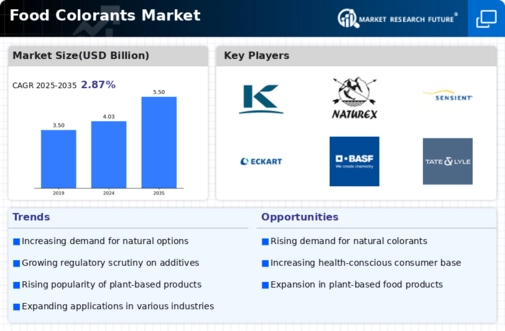

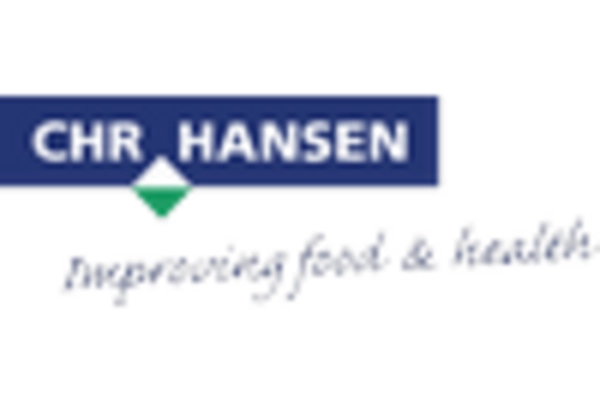
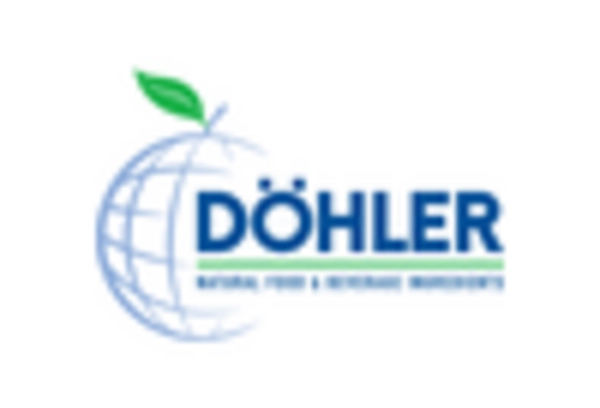
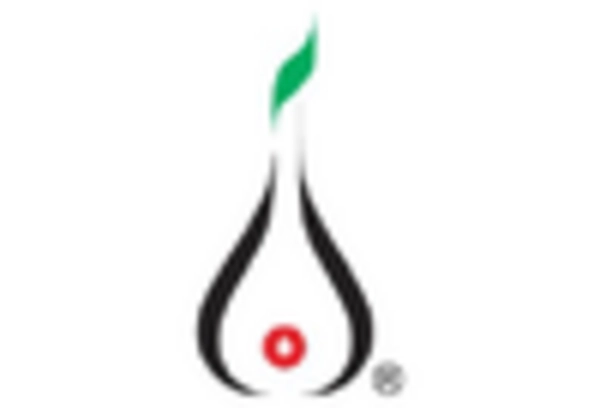
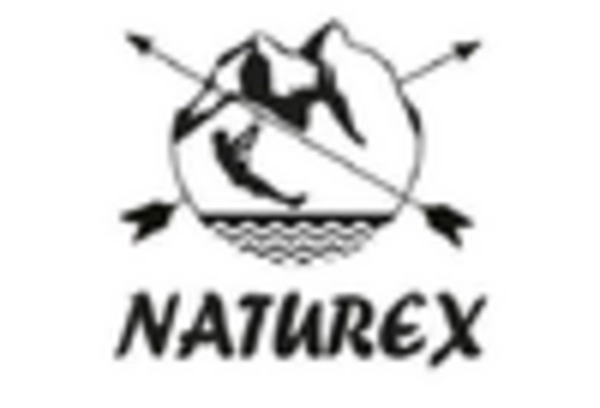
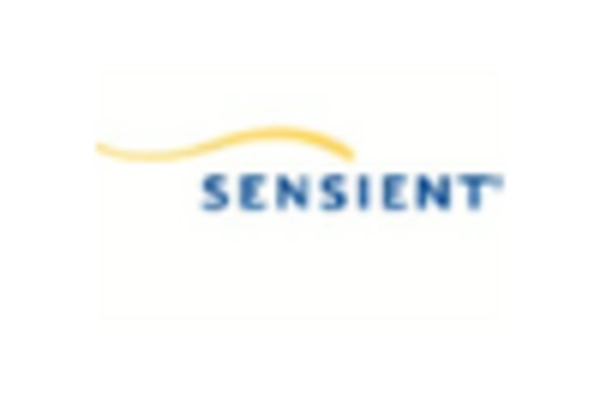









Leave a Comment